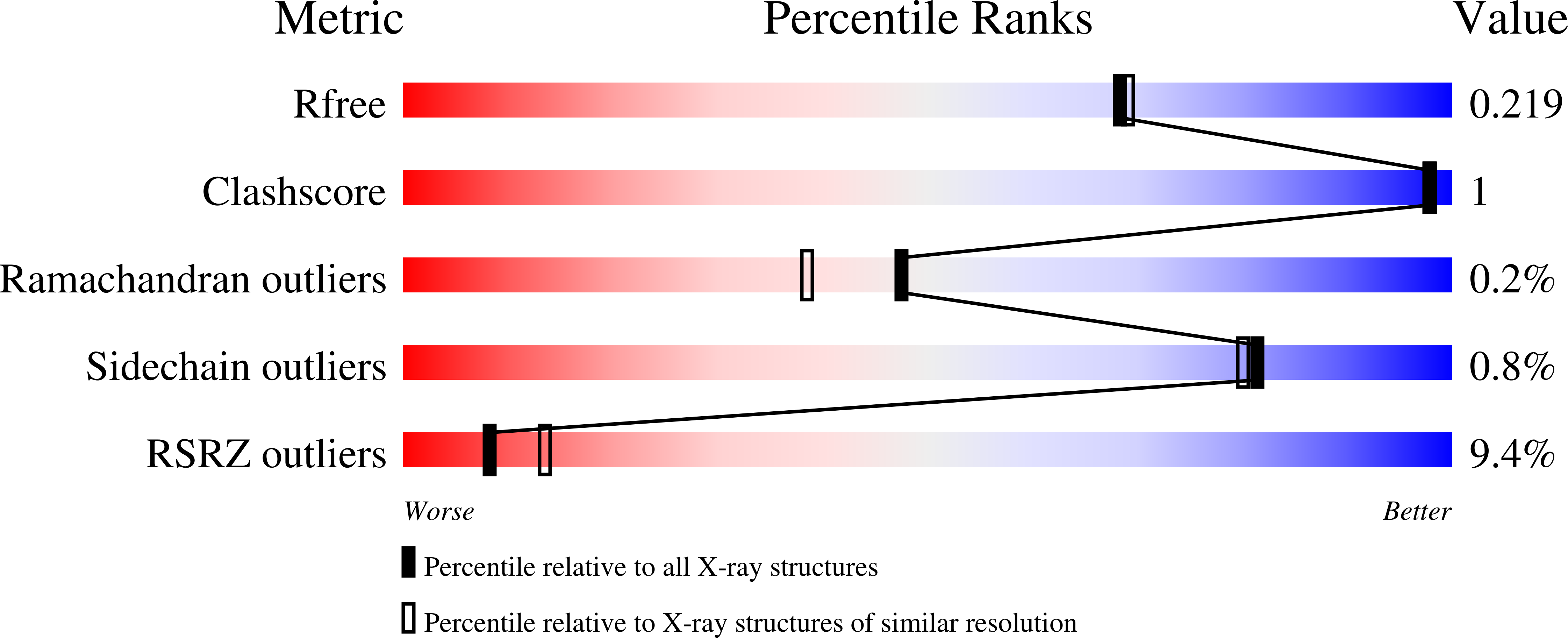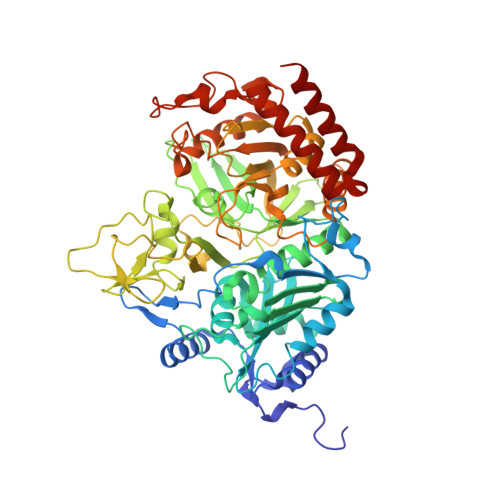Asymmetric Anchoring Is Required for Efficient Omega-Loop Opening and Closing in Cytosolic Phosphoenolpyruvate Carboxykinase.
Cui, D.S., Broom, A., Mcleod, M.J., Meiering, E.M., Holyoak, T.(2017) Biochemistry 56: 2106-2115
- PubMed: 28345895
- DOI: https://doi.org/10.1021/acs.biochem.7b00178
- Primary Citation of Related Structures:
5V95, 5V97, 5V9F, 5V9G, 5V9H - PubMed Abstract:
Mobile Ω-loops play essential roles in the function of many enzymes. Here we investigated the importance of a residue lying outside of the mobile Ω-loop element in the catalytic function of an H477R variant of cytosolic phosphoenolpyruvate carboxykinase using crystallographic, kinetic, and computational analysis. The crystallographic data suggest that the efficient transition of the Ω-loop to the closed conformation requires stabilization of the N-terminus of the loop through contacts between R461 and E588. In contrast, the C-terminal end of the Ω-loop undergoes changing interactions with the enzyme body through contacts between H477 at the C-terminus of the loop and E591 located on the enzyme body. Potential of mean force calculations demonstrated that altering the anchoring of the C-terminus of the Ω-loop via the H477R substitution results in the destabilization of the closed state of the Ω-loop by 3.4 kcal mol -1 . The kinetic parameters for the enzyme were altered in an asymmetric fashion with the predominant effect being observed in the direction of oxaloacetate synthesis. This is exemplified by a reduction in k cat for the H477R mutant by an order of magnitude in the direction of OAA synthesis, while in the direction of PEP synthesis, it decreased by a factor of only 2. The data are consistent with a mechanism for loop conformational exchange between open and closed states in which a balance between fixed anchoring of the N-terminus of the Ω-loop and a flexible, unattached C-terminus drives the transition between a disordered (open) state and an ordered (closed) state.
Organizational Affiliation:
Department of Biology and ‡Department of Chemistry, University of Waterloo , Waterloo, ON, Canada N2L 3G1.


















